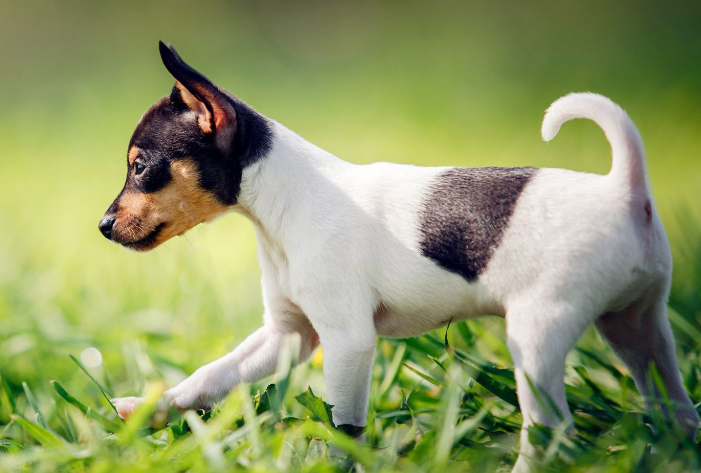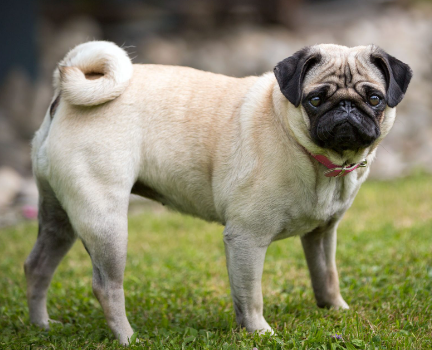The Shepsky, a blend of German Shepherd and Siberian Husky, is a medium-sized, energetic, and loyal canine. They inherit desirable traits from both parent breeds.
Commonly known as the Gerberian Shepsky, despite their mixed breed status, these dogs can be found in shelters and breed-specific rescues. Remember, adopting is always a better option than buying!
These affectionate dogs are not only loving but also diligent workers. Thanks to their high intelligence and loyal nature, they excel in various tasks such as guarding, police work, search and rescue missions, and even military operations.
Living in an apartment simply won’t suffice for Shepskies. They require spacious homes with yards where they can fulfill their need for activity and responsibility. Without proper stimulation, they may become destructive and difficult to manage. Keeping them engaged in tasks is key to their happiness! Keep reading to determine if this breed is the right fit for you.
- Height: 20 – 26 inches
- Weight: 35 – 90 pounds
- shepsky lifespan: 7 – 14 years
- Colors: black, gray, red, blue, white, brown / chocolate/liver
Breed Characteristics
This mixed breed embodies the perfect blend of two highly intelligent and majestic purebred types. A typical litter usually yields 6 to 8 incredibly endearing puppies, each displaying unique variations in appearance. Some may inherit heterochromia – characterized by different multicolored eyes – from their Husky parent, while others might possess the longer muzzle characteristic of their German Shepherd parent.
Regardless of their traits, all these puppies are guaranteed to exhibit the charmingly attentive awareness characteristic of both parent breeds!
| Adaptability: 3Point |
| All Around Friendliness: 4Point |
| Health And Grooming Needs:3Point |
| Trainability: 4Point |
| Physical Needs: 5Point |

History Of The Shepsky
As previously mentioned, the term “Shepsky” refers to a canine breed that is a mix of the German Shepherd and Siberian Husky breeds.
The German Shepherd originated in Germany during the 19th century when herding dogs were actively bred. The first officially recognized German Shepherd, named Horand von Grafrath, was registered by Max von Stephanitz in 1899. Horand was meticulously bred over several generations to create an efficient working dog suited for herding sheep.
Due to their harmonious blend of strength, intelligence, trainability, and obedience, German Shepherds have become popular choices for various working roles such as police work, service tasks, and search and rescue operations. Despite their powerful bite, German Shepherds are often misunderstood as aggressive towards humans. However, incidents of aggression are primarily attributable to their popularity as pets rather than inherent strain-specific aggression. German Shepherds are generally regarded as excellent family pets and are known for their kindness and protective instincts, particularly towards children.
On the other hand, the Siberian Husky originates from Northeastern Asia, where they were selectively bred by the Chukchi people of Siberia for sled-pulling. This breeding resulted in an energetic breed with a strong inclination for running. Siberian Huskies thrive in cold climates and were introduced to Alaska during the Alaskan Nome Gold Rush around 1900. While they were initially used as working dogs in frozen terrains, they have become popular household pets over time.
Despite their friendly nature and suitability for families with children, Siberian Huskies can be mischievous if not properly trained and socialized. They tend to engage in behaviors such as digging, biting, jumping, and attempting to escape from confined spaces.
Both breeds share similar sizes and a wolf-like appearance, which makes them well-suited candidates for crossbreeding.
Appearance
head is elongated and tapered, featuring prominent jaws and teeth that meet in a scissors bite. The face is broad and expansive, adorned with bright blue eyes that exude a keen intelligence.
Eye coloration may vary from light brown to a captivating blend of blue and brown hues. Often, these beautiful hybrids sport a partial or complete black mask across their face, adding to their allure. Their alert gaze is held high on their heads, emphasizing their confident demeanor. With sturdy yet slender legs, and a long, bushy tail, Shepskies possess a graceful and balanced physique.
Temperament
German Goatherds are renowned for their confidence and bravery, often serving as valuable working dogs in fields such as law enforcement, where their strength and loyalty are highly esteemed. Meanwhile, Siberian Huskies are typically known for their sociable, friendly, and playful nature; they were bred to be independent problem solvers, according to Nichols.
While each parent breed possesses unique traits, there’s no consistent personality type for Gerberian Shepskies.
“As Nichols explains, ‘You never know what you’re going to get. You might end up with a wonderfully sweet and obedient dog, or you might have a more challenging dog that’s less responsive.'”
Generally, Gerberian Shepskies are highly energetic and require ample exercise and mental stimulation. Although they can be playful and affectionate with their families, they may exhibit wariness towards strangers, Nichols notes.
Early socialization and consistent training are crucial for Gerberian Shepsky puppies to understand that the unfamiliar is not always threatening.
Personality
Many Shepsky owners characterize their dogs as lively and playful companions. Medium-sized and brimming with energy, they come from a lineage of working parents, often requiring tasks to stay engaged, regardless of their size.
Shepskies thrive in a pack dynamic and benefit from a strong pack leader to provide guidance. It’s common for them to test boundaries and attempt to assert control, so it’s vital not to succumb to their pushiness. Establishing yourself as a leader entails setting clear and consistent ground rules.
One effective method to assert leadership is by making your dog wait for meals. By controlling access to resources like food, treats, and toys, you reinforce your position as the keeper of these valuable assets.
However, Shepskies struggle with being left alone for extended periods. Without the companionship, exercise, and mental stimulation they require, they can become bored and frustrated, potentially exhibiting unwanted behaviors such as excessive barking or destructive chewing.
Like all dogs, early socialization is crucial for Shepsky puppies. Exposure to diverse people, environments, and experiences during their formative stages helps ensure they develop into well-rounded and adaptable dogs.
Health & problems
Gerberian Shepsky puppies may inherit health issues from their parents’ breeds. Many purebred dogs are prone to a variety of health problems. However, as a mixed breed, Gerberian Shepskies possess a diverse genetic makeup from both German Shepherds and Huskies, which often contributes to overall better health compared to their purebred counterparts.
When acquiring a puppy, it’s crucial to choose a reputable breeder who can provide assurance of the breed’s health and the absence of hereditary health issues. Avoid purchasing puppies from breeders who cannot furnish written proof of the parent’s health status.
While some health issues may not manifest in puppyhood, obtaining an adult dog can help identify and address potential concerns as they age. Regular veterinary check-ups every six months are essential for maintaining your dog’s health. Your veterinarian can collaborate with you to establish a preventive care plan aimed at mitigating various health risks.
They have the following health problems
- hipsterism dysplasia
- Blood diseases
- Epilepsy
- Eye problems( similar to cataracts)
- Picky eaters
- Digestive issues
Dental Health Checkup
Maintaining good dental hygiene is crucial for all dogs, and it holds particular significance for Shepsky dogs. If you intend to adopt this breed, it’s imperative to prioritize their dental care. Establishing a consistent routine of brushing your dog’s teeth daily can turn this task into a positive experience for both you and your pet. Avoid forcing your puppy’s jaws open forcefully; instead, gently clean their lips and teeth with care and patience.

Care
Just like with any dog, it’s essential to stay current with regular veterinary check-ups for your Shepsky to detect any health concerns early on. Your veterinarian can assist you in devising a comprehensive care plan tailored to keep your canine in optimal health.
Given their propensity for weight gain despite their high energy levels, Shepskies require approximately one hour of exercise each day, ideally in spacious outdoor areas where they can roam freely.
Regularly inspect your dog’s coat for debris and pests, and follow your veterinarian’s recommendations for cleaning as needed. Keep their nails trimmed to a suitable length, aiming once or twice a month to prevent them from becoming too long and causing discomfort. If you hear their nails clicking against the ground, it’s time for a trim, which your groomer can assist with.
Oral health is of paramount importance for Shepskies, as they are susceptible to dental issues like many other breeds. Brushing their teeth daily is crucial, and your veterinarian can guide proper brushing techniques to maintain optimal dental hygiene.
Best Food For
- Purina Pro Plan Puppy Food
- Royal Canin Large Puppy Dry Dog Food
- Zignature Essential Multi-Protein Formula With Probiotics Dry Dog Food
- Blue Buffalo Freedom Grain Free Natural Puppy Small Breed Dry Dog Food, Chicken
- Taste of The Wild Sierra Mountain Dog Food
Feeding
It’s essential to provide puppies with high-quality, nutrient-rich food that is specifically formulated for their developmental needs. As puppies grow, their nutritional requirements will change, so it’s important to adjust their food intake accordingly.
Ensuring that puppies receive the necessary nutrients is crucial for their growth and development. Compared to adult dogs, puppies require food that is higher in calories to support their rapid growth. As they mature, their diet and calorie intake will need to be adjusted accordingly. Additionally, the calorie content of their food should be appropriate for their size, age, and activity level.
Overfeeding Shepsky puppies and allowing them to become overweight can lead to various health problems. Instead of providing food constantly available, it’s recommended to limit snacks, promote regular exercise, and feed them scheduled meals to maintain a healthy weight and prevent potential health issues.
Grooming
Regular grooming is essential for maintaining the beautiful coat and healthy skin of your double-coated Shepsky. Opt for high-quality grooming products suitable for their coat type. This sociable breed can be bathed as often as once a week, or up to once every six weeks.
Regular brushing is crucial to prevent matting and tangling of the coat. Prior to bathing, use a high-velocity dryer to remove dirt and debris from the skin and any tangled fur. Afterward, gently brush the coat to remove loose hair before bathing.
When bathing your Shepsky, wet the coat thoroughly and apply shampoo, ensuring it reaches down to the skin. Avoid vigorous scrubbing to minimize tangling. Complete shampooing will promote the development of a healthy, strong, and manageable coat. Rinse the body with room-temperature water.
After bathing, gently towel-dry the coat to remove excess moisture. Then, use a dryer to ensure the coat is completely dry, checking for any inconsistencies in coat density as you go. If necessary, continue brushing and combing to address any remaining tangles.
Finish by using a slicker brush throughout the coat to ensure it is smooth and free of loose hair. With proper grooming and attention to detail, your Shepsky’s coat will remain healthy and lustrous.
Training
Training to Shepsky Puppy
Training sessions should be purposeful, enjoyable, and conducted with gentleness. Consistency, patience, and awareness of the dog’s temperament are essential for effective training. Gerberian Shepskies are active dogs that thrive on play.
Providing them with ample space to roam and play not only strengthens their bones but also enhances their overall health and immunity. Insufficient exercise can lead to mischievous behavior and high demands from these energetic dogs, so it’s crucial to provide outlets for them to release their excess energy.
jalopy Training
A beneficial approach to crate training involves providing a crate that offers enough space for your Shepsky puppy to comfortably turn around and lie down. Crate training serves multiple purposes, including reinforcing positive behaviors, mitigating separation anxiety, and preventing your puppy from accessing harmful items when unsupervised.
Ensure the crate is equipped with a soft blanket and plenty of toys for your dog’s comfort and entertainment. Crate training for Shepsky puppies promotes their safety and overall well-being, making it a crucial aspect of their care. It’s one of the most important steps you can take for your new puppy, serving various functions.
For adult dogs, crates should allow them to stand, sit, and stretch out comfortably. While crate training requires patience and consistency, Shepskies are intelligent dogs, and with regular training sessions, they can quickly learn to be house-trained.
Obedience training
This is one of the fundamental and crucial aspects of dog training. Given the somewhat assertive nature of this canine breed, obedience training is paramount. Start with basic obedience commands such as “sit,” “down,” “stay,” and “come.”
Ensure you have plenty of treats available to reward your Shepsky puppy for good behavior and obedience. Obedience training requires patience and dedication, as it demands considerable effort and time.
Exercise
If you’re able to commit several hours a day to exercise, possess a firm hand in training, and reside in cooler climates, the Gerberian Shepsky might be the perfect dog for you. These large dogs require significant physical activity, so in addition to having a yard, plan for at least one or two hour-long walks daily for your adult dog.
Puppies have lower exercise needs compared to adults, so adjust their activity time based on their age. For instance, a 5-month-old puppy requires 25 minutes of exercise per day, while a 6-month-old needs 30 minutes. These dogs crave attention and may experience separation anxiety, so expect them to stick by your side most of the time.
Allow Shepsky puppies to engage in activities like running, jumping, or playing on hard surfaces like pavement only once they’re at least two years old and their joints have fully developed. However, playing on the grass is suitable for puppies, and their puppy energy, including their small jumps, is encouraged.
Adoption Center
Other Dog Breeds and Further Research
FAQs
German Shepherd Husky Mix Puppy Price
A German Shepherd Husky Mix puppy will generally cost between $350 and $900.
Are German Shepherd husky mixes good dogs?
This sought-after German Shepherd Husky Mix provides the stylish of both types – He is strong and smart, with the independence of Huskies, and fierce fidelity of German Goatherds. While the Shepherd Husky Mix is a friendly strain, and perfect for families with children, the German Shepherd genes make him a great guard canine.
Is Gerberian Shepsky rare?
The Gerberian Shepsky is a rare developer mongrel with numerous desirable traits.
What happens if you mix a husky and a German Shepherd?
When you mix an intelligent German Shepherd and a majestic Siberian Husky, you get a blend also known as a Shepsky or a Gerberian Shepsky. utmost canine possessors hope to get an energetic and pious medium-sized canine that inherits the stylish rates of both parents.
How big will a German Shepherd husky mix get?
between 20 and 26 elevations altitudinous
So anticipate your Husky German Shepherd Mix to be between 20 and 26 elevation altitudinous. When talking about weight, Siberian Huskies weigh between 35 and 60 pounds, while German Goatherds are important and heavier at around 49 to 88 pounds. So maybe the weight of a Husky German Shepherd Mix will be from 35 to 88 pounds.












One thought on “German Shepherd Husky Mix (Shepsky): Special Info”